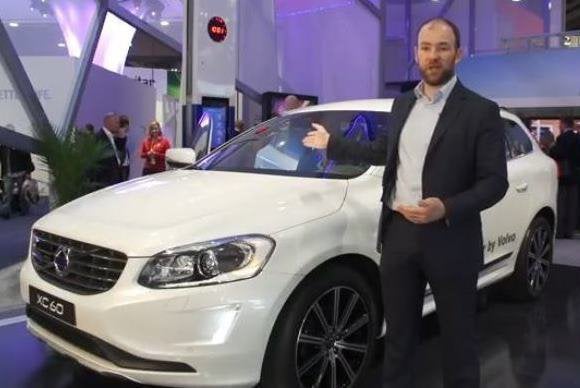
The smartest cars may need 5G networks, Ericsson says

Some of the most futuristic features envisioned in networked cars will depend on 5G mobile technology that probably won’t be available in full until 2020, according to Ericsson’s chief technology officer.
There’s a bright future for cellular in cars, according to Ulf Ewaldsson, who is the mobile gear vendor’s senior vice president and chief technology officer and head of Group Function Technology. He spoke with IDG News Service following a big automotive push by Ericsson at International CES earlier this month. Among other things, the company showed off its CVC (Connected Vehicle Cloud), designed to deliver applications in a car for information, entertainment, making service appointments and other needs. Ericsson announced partnerships with both a carrier (AT&T) and a carmaker (Volvo).

Ulf Ewaldsson
But more advanced networked-car visions, up to and including self-driving cars, will rely on capabilities that Ericsson sees coming in the as-yet-undefined 5G technology that will augment today’s 4G networks, Ewaldsson said. Ericsson and others are already talking about what to include in 5G, but Ericsson has said it expects commercial deployments of the future specification starting in 2020.
Connected to a 5G network, cars could warn drivers of an impending collision or even be guided through traffic automatically with no driver behind the wheel, Ewaldsson said. Demonstrations at CES showed off both of those types of capabilities. But making those kinds of services work would require guaranteed performance all the way from the cloud that runs the service to the car, and back again.
”The networks that we have today have nowhere near that quality-of-service guarantee,” Ewaldsson said. Instead, 4G systems treat all data as “best-effort” traffic. Even though 4G radios, at their best, have a latency of just 20 milliseconds (a big improvement from 35 milliseconds on 3G), the critical thing is being able to predict and control those delays for each application, he said.
”A car is a good example of something that will have very different demands on different bitstreams,” Ewaldsson said. For example, a child watching a movie in the back seat may be getting that video stream over the same cellular network that’s responsible for real-time warnings and vehicle commands. Future networks will have to be able to tell the difference between them and prioritize one application over another, he said. “Maybe we don’t want to do this right now. Maybe we want to do this six microseconds later.”

Emmett Long, director of automotive solutions at Ericsson, describes the company’s Service Enablement Platform used in Volvo’s connected car.
In addition to prioritizing packets and using low-latency radios, 5G networks should be able to communicate the service levels for different traffic types to the clouds that will run the applications, Ewaldsson said. That calls for software-defined networking, an emerging set of technologies that shifts control away from traditional routers and switches and into software running on various platforms.
If all this work makes smarter cars sound like an impossible dream, Ewaldsson did say some elements of 5G would be implemented sooner than others. In addition, there is a parallel development track in the industry pursuing the same results without network assistance, he said, though he thinks everything disconnected eventually will hook up to the network.
Ewaldsson defended the lengthy process of completing global telecommunications standards.
”That model has been very successful. It has globalized technology faster than the super-competitive model, if you compare it to the IT industry,” he said. The alternative can create “redundant” innovation by competing companies that each try to make their approach dominant through their weight in the market, he said.